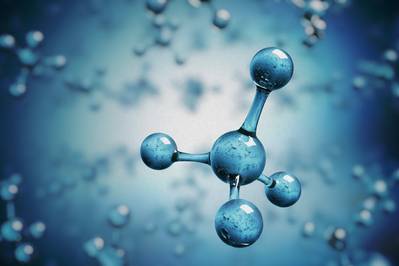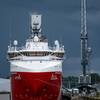IACS Adopts New Unified Requirement on Ammonia Releases
The International Association of Classification Societies (IACS) has developed a Unified Requirement (URH1) covering the release of ammonia from the onboard systems for bunkering, storing, preparing and using ammonia as fuel.
IACS URH1 aligns with the Recommendations from U.S. National Institute for Occupational Safety and Health (NIOSH) and establishes that an ammonia concentration of 300 ppm or more is immediately dangerous, and a concentration of 25 ppm or more is dangerous if the exposure is longer than eight hours.
Additionally, it requires the system dealing with ammonia be designed to prevent a direct release of ammonia to the atmosphere during normal operation and also, when possible, during any reasonably foreseeable abnormal scenario.
In situations where a direct release is unavoidable under either a normal or abnormal scenario (such as the activation of a tank pressure relief valve), the points where ammonia is expected to be released are required to be identified by the designer in a risk assessment and to be listed in the ship design documentation.
The concentration resulting from such releases must not exceed a safe concentration (25 ppm) at locations of the ship accessible to the crew and this is to be demonstrated through gas dispersion analysis. This requirement is expected to result in the establishment of “toxic areas” (similar to hazardous areas on tankers) with access restrictions and other precautions, such as the absence of air intakes in that area.
URH1 further requires the point at which ammonia is released to the atmosphere, (e.g. outlet of vent mast) to be provided with audible and visual alarms, which are to be activated when the discharged gas has an ammonia concentration of 300 ppm or more, to warn people to promptly leave the area and seek refuge.
Gas dispersion analyses are required to be carried out for abnormal and emergency scenarios identified by way of a risk assessment. Depending on the results of these analyses, measures will have to be taken to prevent the crew onboard from being exposed to dangerous concentrations of ammonia. The spaces where all reasonably foreseeable ammonia leaks may occur (e.g. secondary enclosure, fuel preparation room), even if not normally manned, are to be monitored and the source of the release should be shut down when a concentration exceeding 300 ppm is detected.
In other work relating to the use of ammonia as a fuel, IACS is working on Requirements for ammonia treatment systems (equipment intended to reduce the concentration and/or quantity of released ammonia) and requirements for gas dispersion analysis.
Other safe decarbonisation-related work underway in IACS includes developing requirements for the selection and testing of materials and equipment, including portable tanks, for the use of hydrogen as fuel, and requirements on electrical energy storage systems, including a Type Approval standard for Lithium-based batteries.
IACS Secretary General Robert Ashdown said: “URH1 on the control of ammonia releases on ammonia fuelled vessels is a first, but significant, step in providing industry with enhanced levels of assurance for this new fuel type and will be supplemented with further complementary guidance in due course. This work, together with the other work-streams underway within our Safe Decarbonisation Panel, demonstrates IACS’ strong commitment to ensuring that safety remains at the forefront of the maritime industry’s efforts to meet its decarbonisation targets.”










